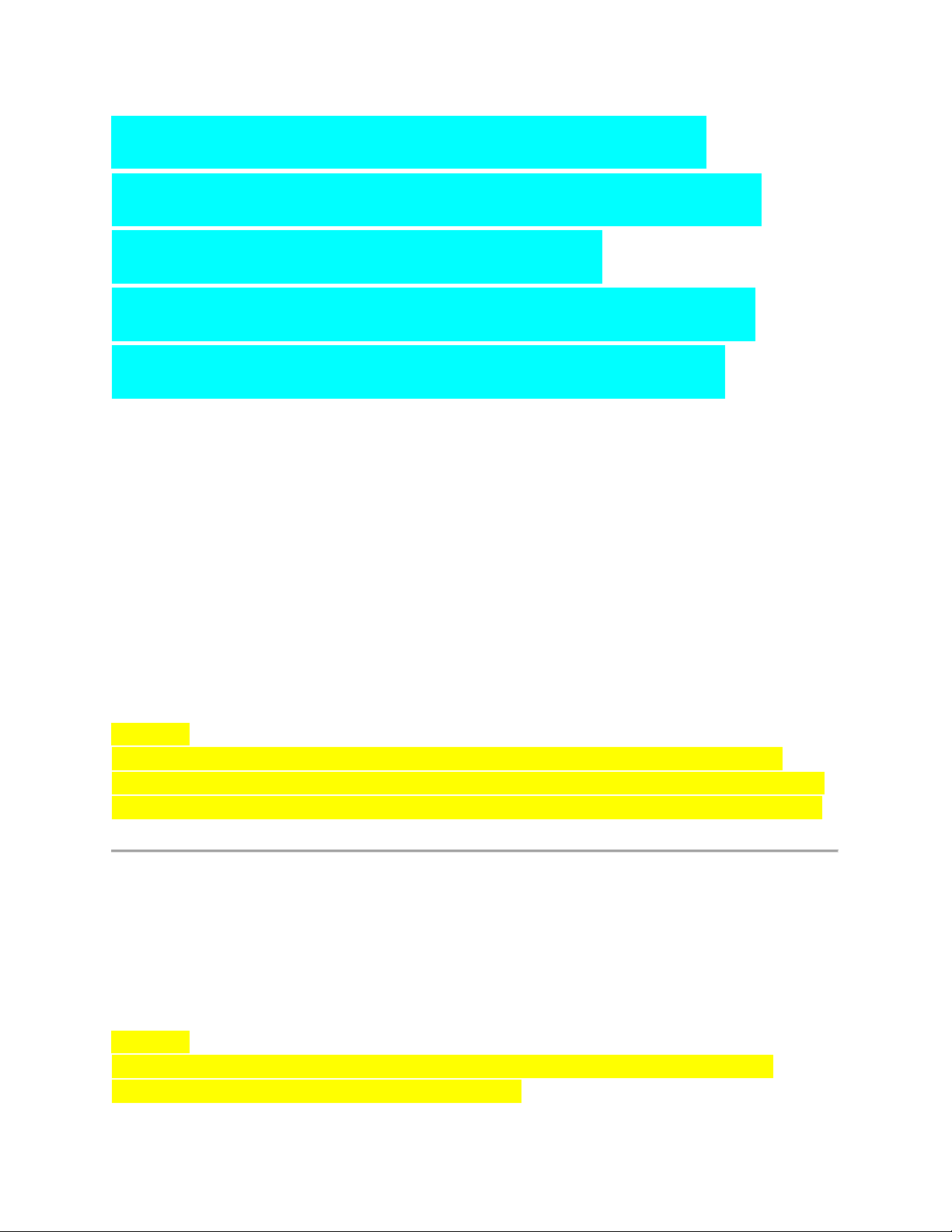
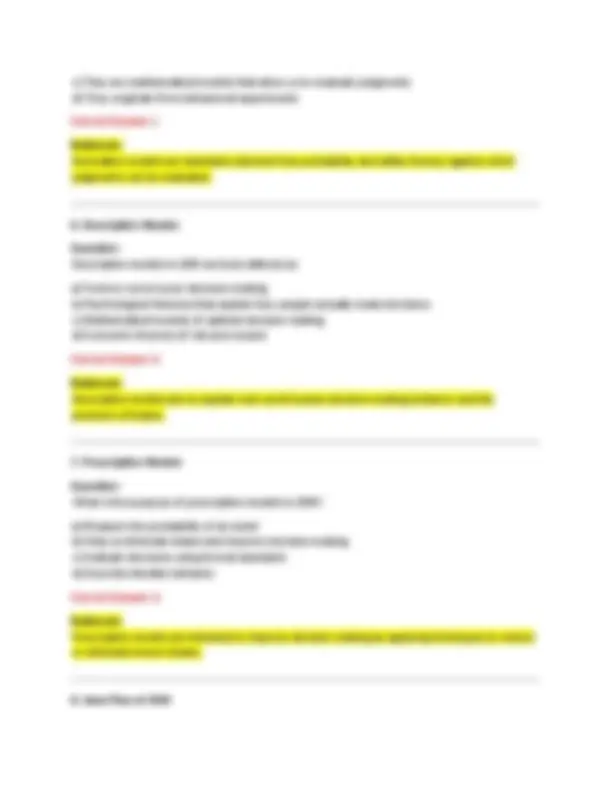
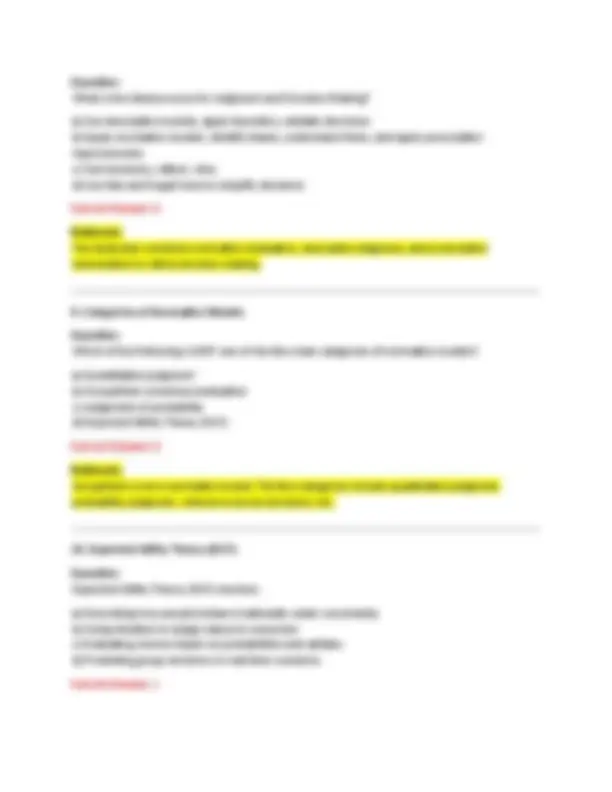
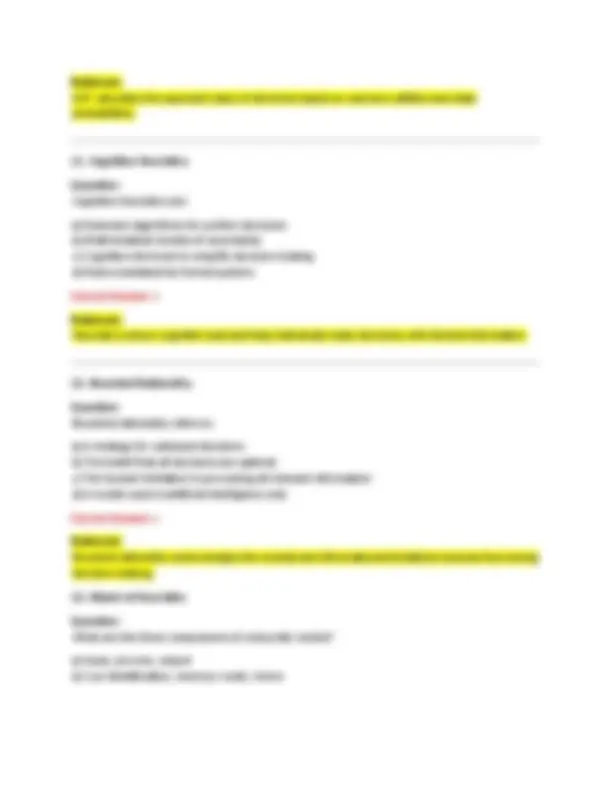
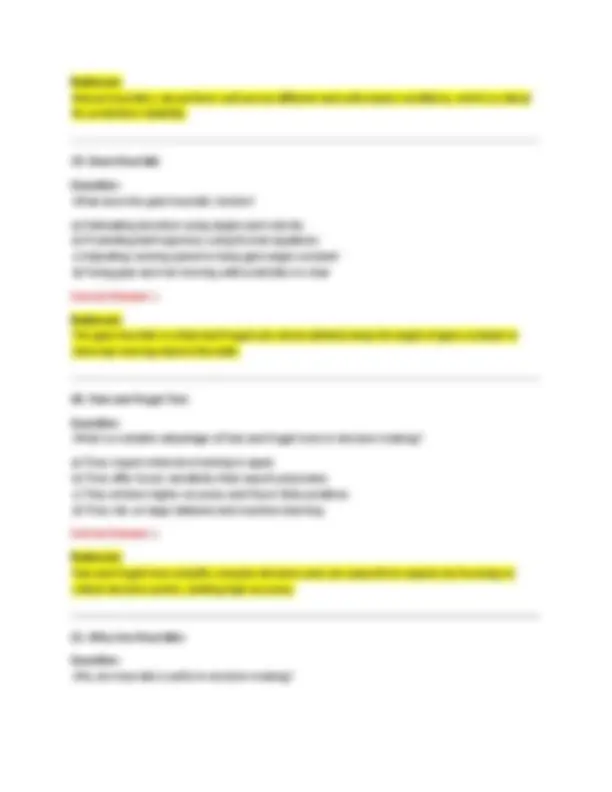
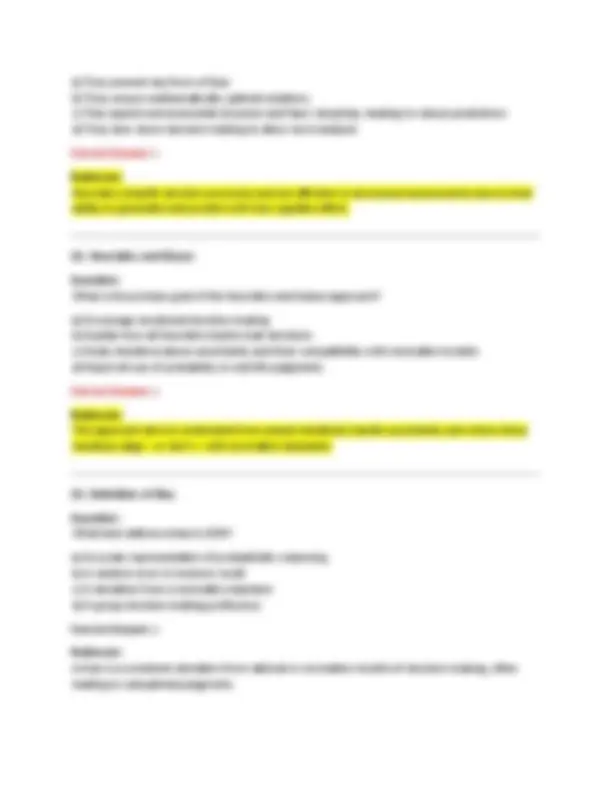
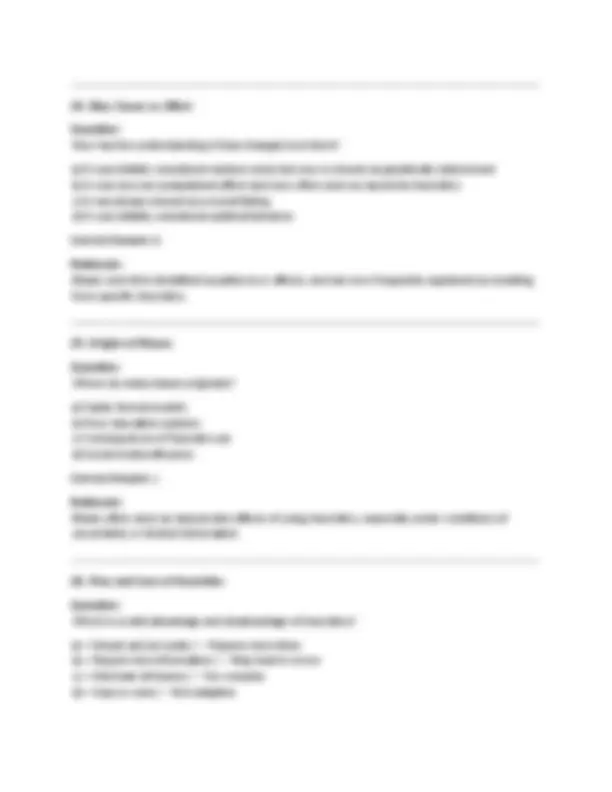
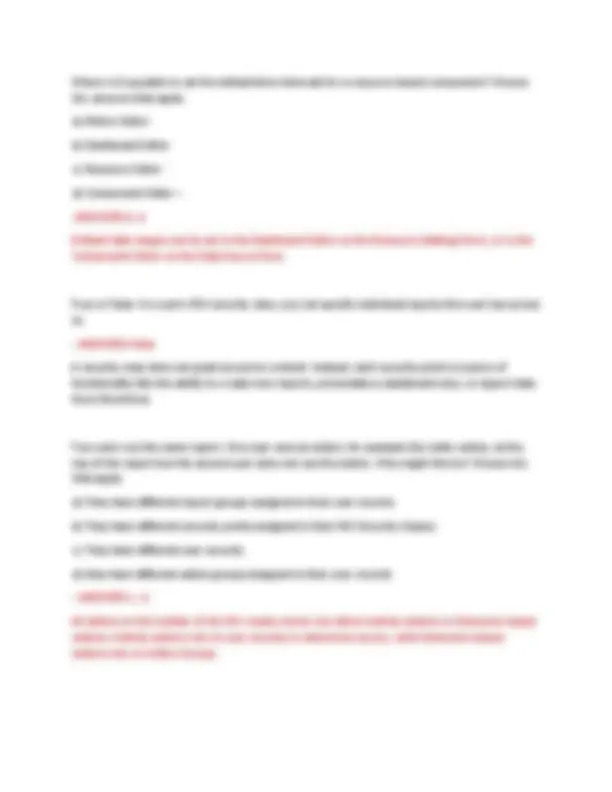
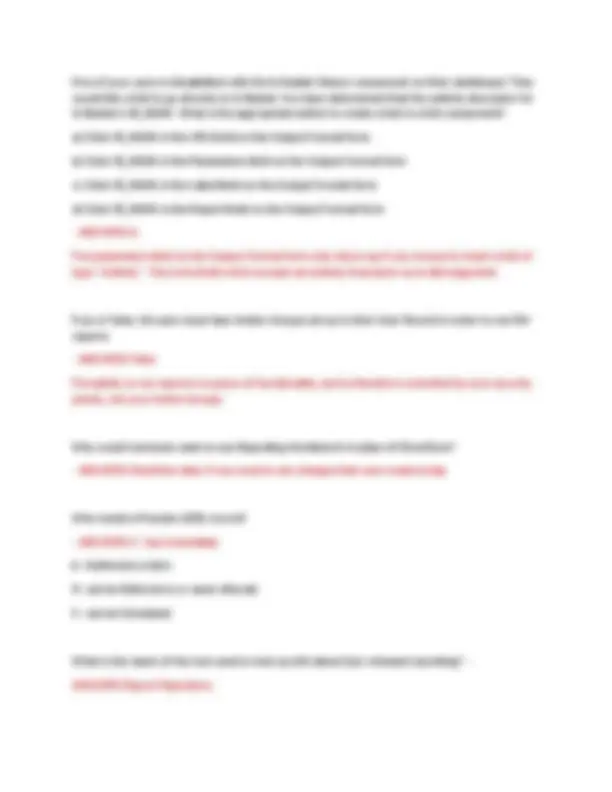
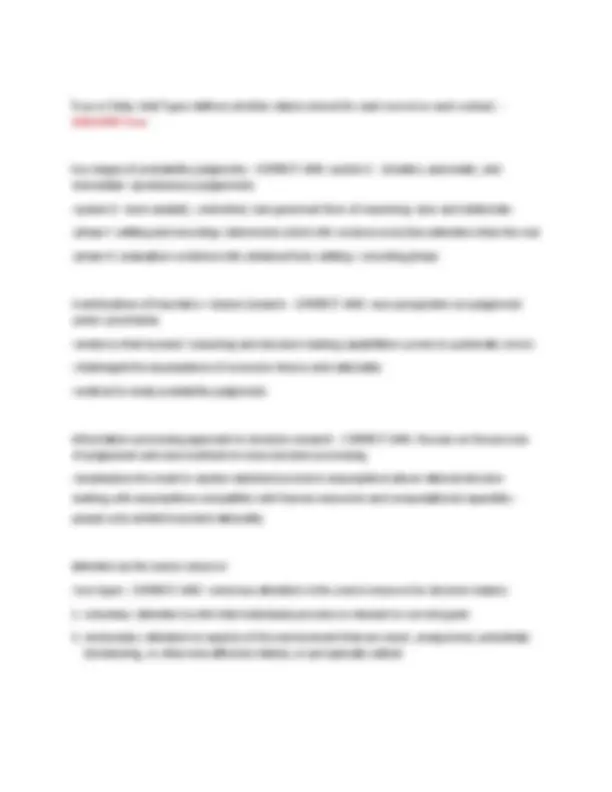
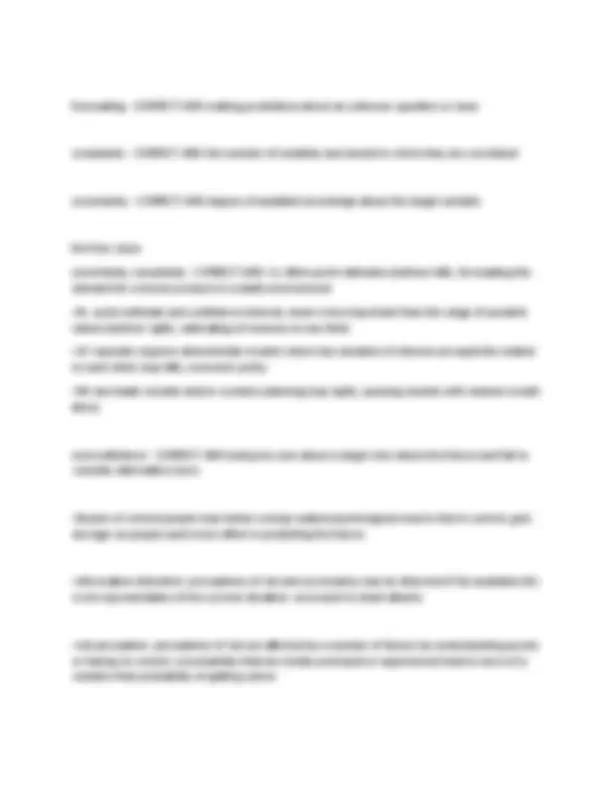
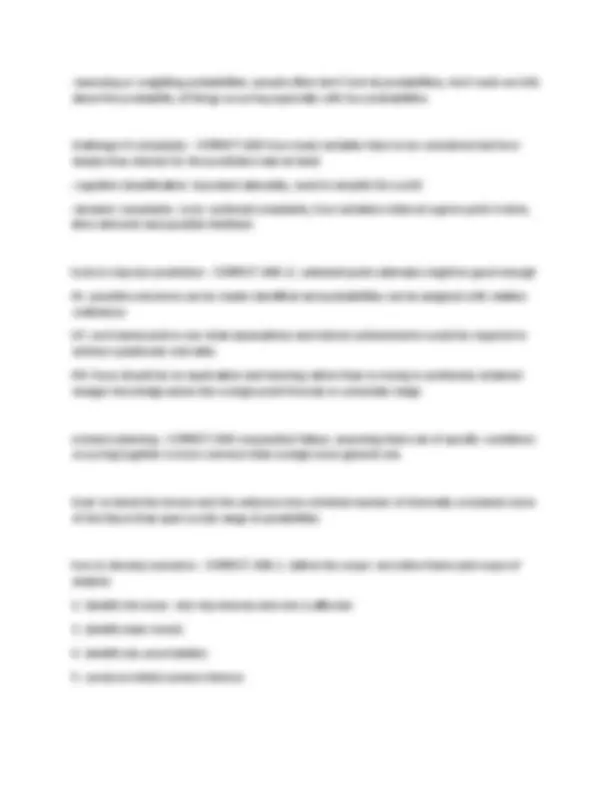
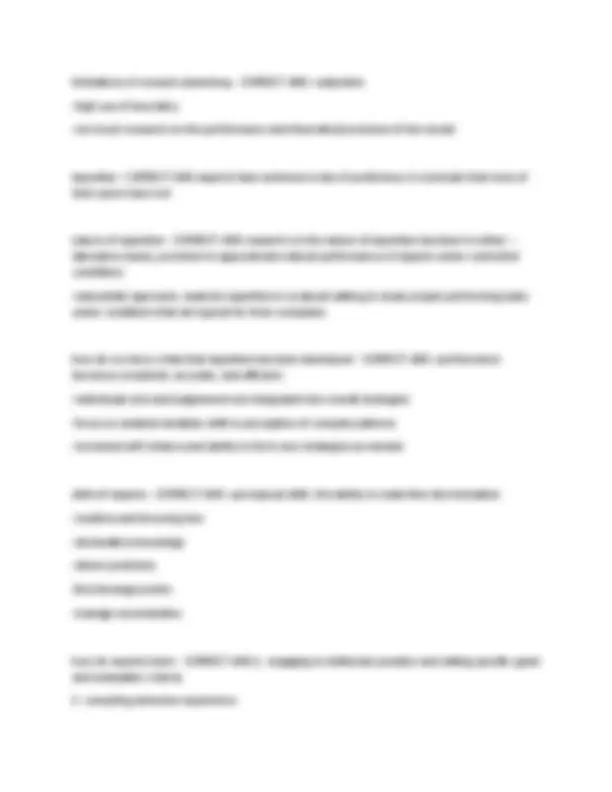
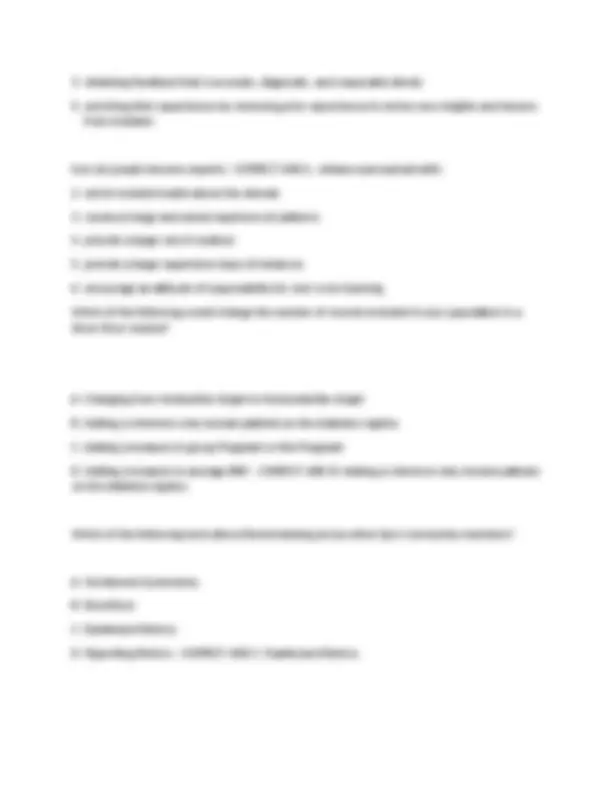
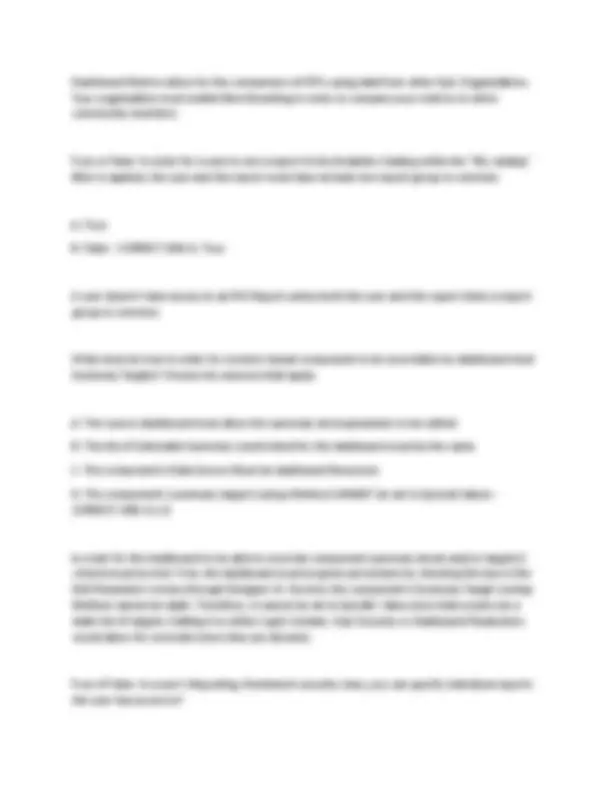
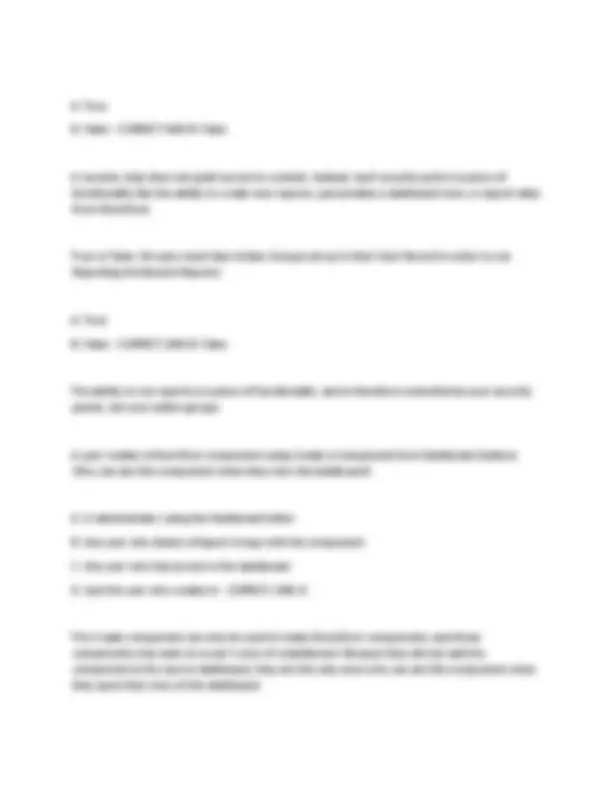
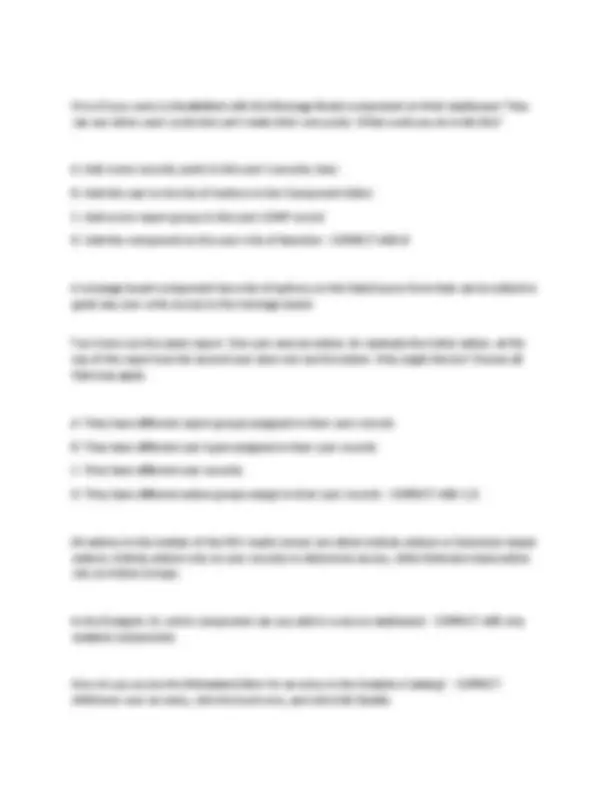
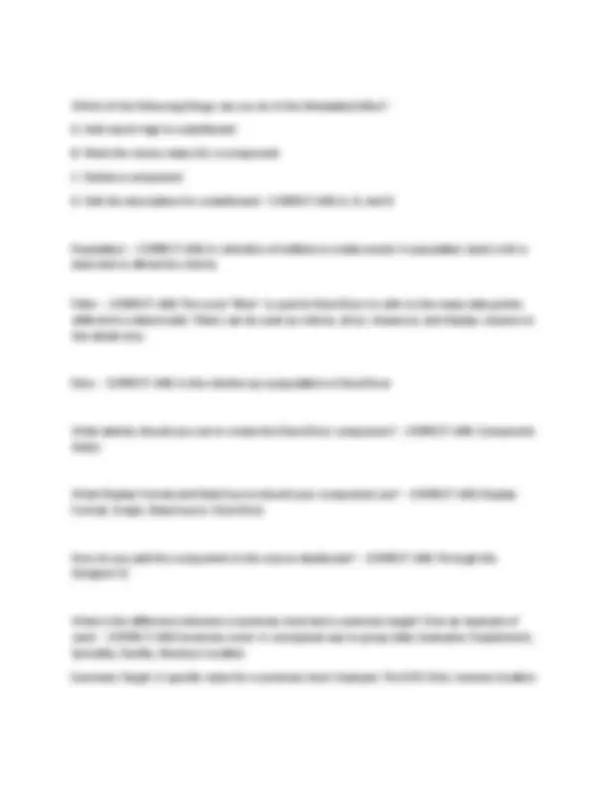
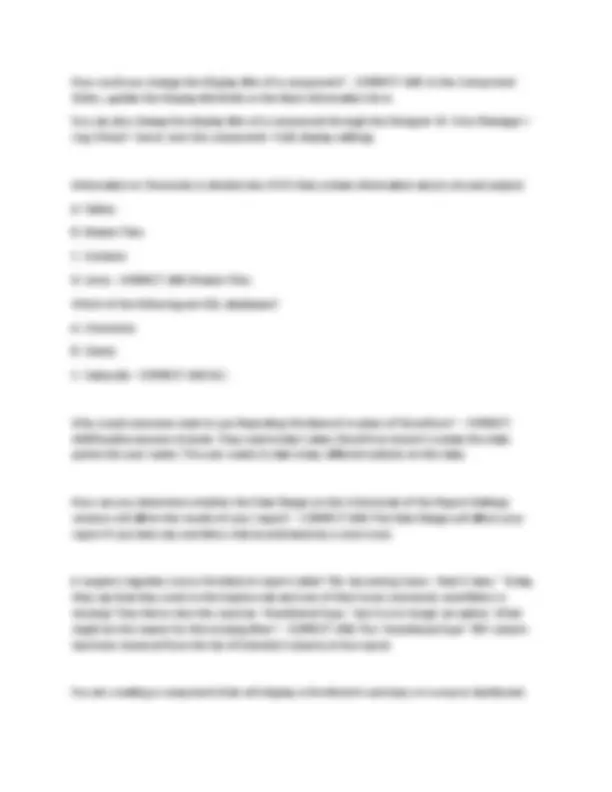
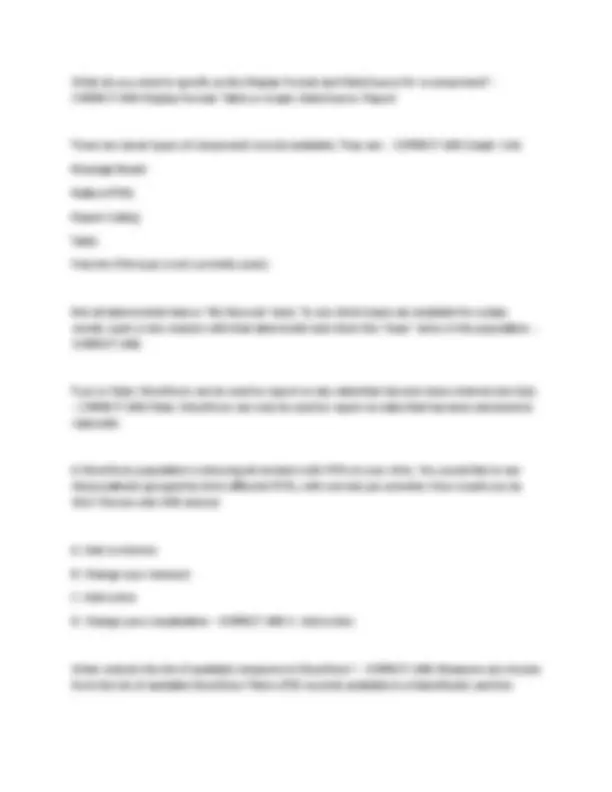
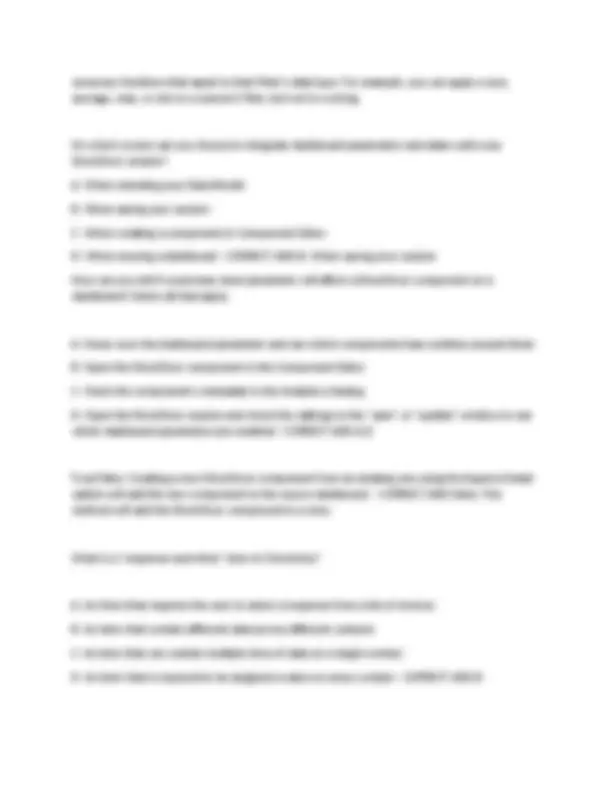
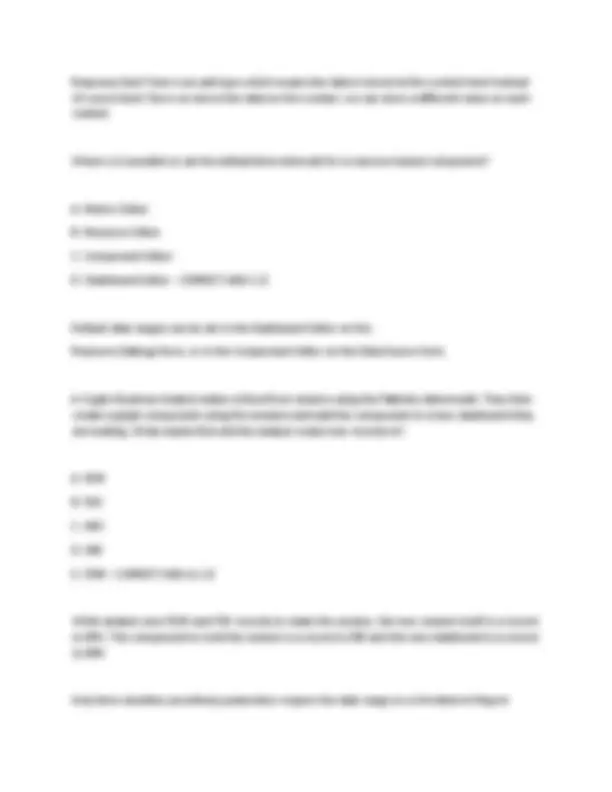
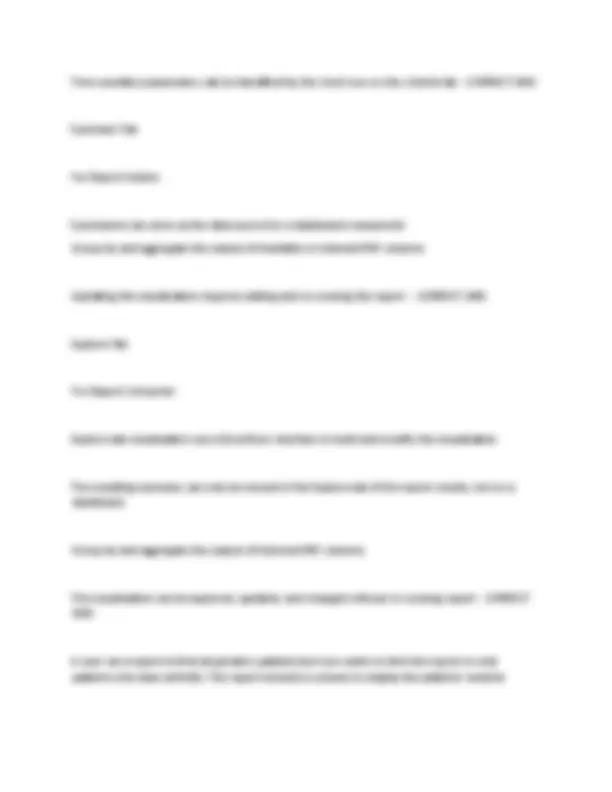
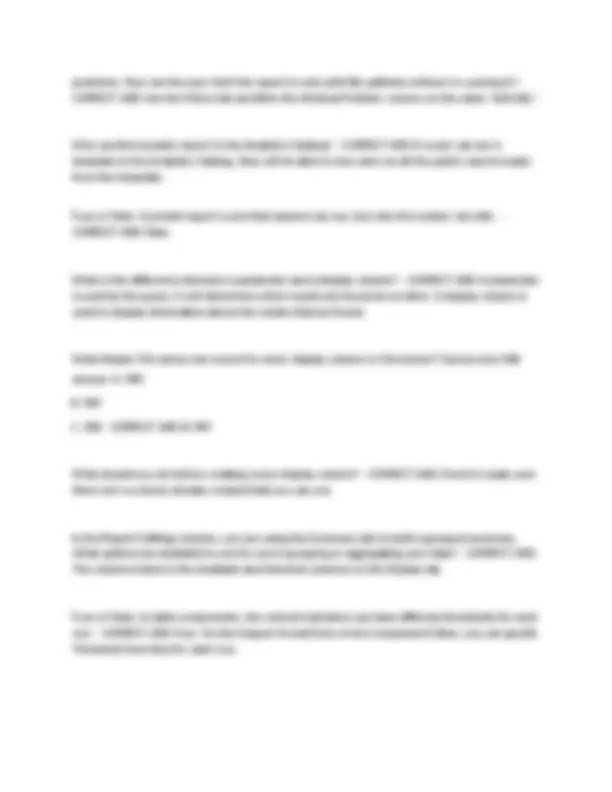
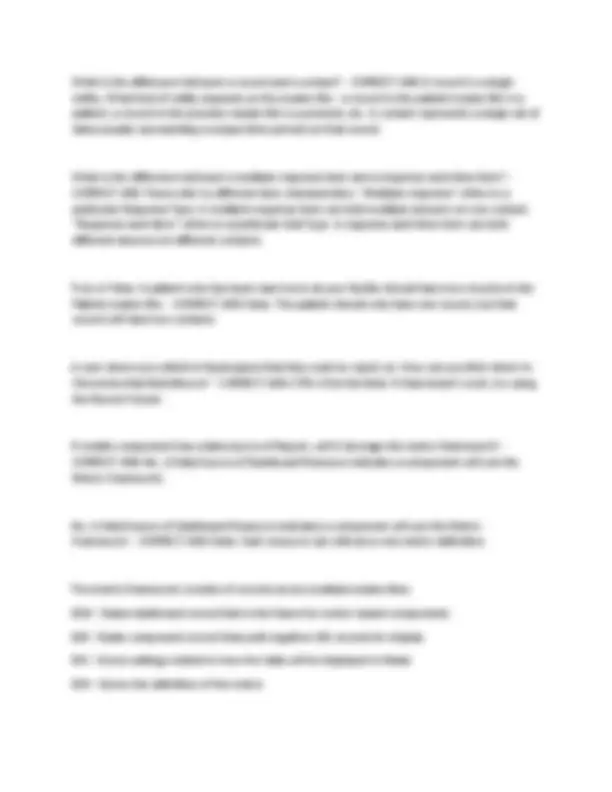
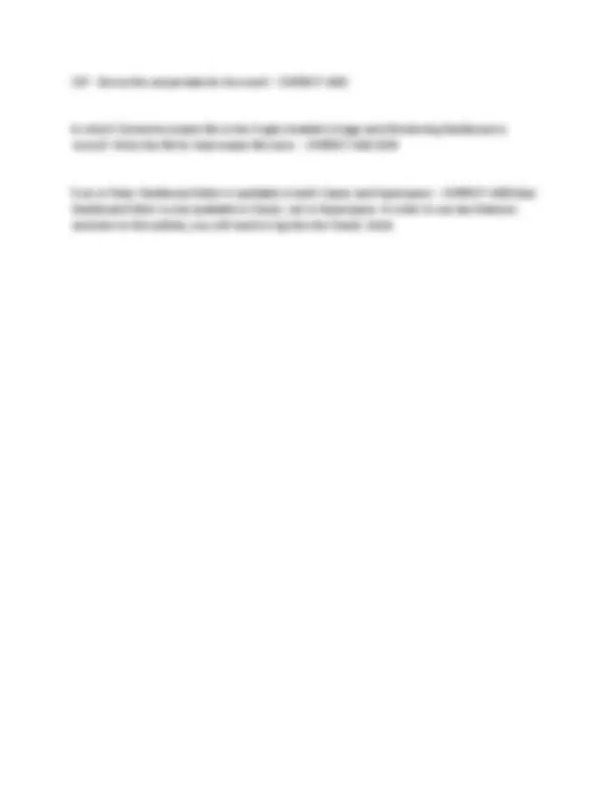


Study with the several resources on Docsity

Earn points by helping other students or get them with a premium plan


Prepare for your exams
Study with the several resources on Docsity

Earn points to download
Earn points by helping other students or get them with a premium plan
Community
Ask the community for help and clear up your study doubts
Discover the best universities in your country according to Docsity users
Free resources
Download our free guides on studying techniques, anxiety management strategies, and thesis advice from Docsity tutors
A comprehensive set of exam questions related to judgment and decision making (jdm), covering topics such as normative, descriptive, and prescriptive models, cognitive heuristics, and bounded rationality. Each question is accompanied by a correct answer and a detailed rationale, making it an excellent resource for students studying cognitive psychology and decision science. The questions explore various heuristics like recognition, gaze, and tallying, as well as the application of fast and frugal trees in simplifying complex decisions. This study material is designed to enhance understanding and test knowledge of key concepts in jdm, ensuring a thorough preparation for exams and a deeper insight into how individuals make decisions under various conditions. It also covers expected utility theory (eut) and its role in evaluating choices based on probabilities and utilities, offering a complete overview of the field.
Typology: Exams
1 / 33

This page cannot be seen from the preview
Don't miss anything!


























1. Dashboard Summary Targets Override Conditions Question: What must be true in order for a metric-based component to be overridden by dashboard-level Summary Targets? (Choose ALL that apply) a) The component's Dynamic Location Method CANNOT be set to "None" b) The component's Data Source MUST be Dashboard Resources c) The list of Selectable Summary Levels listed for the dashboard must be the same as the list of Summary Levels listed for the component on the Data Source form d) The "Use override settings to control components on this dashboard" MUST be checked on the Resource Settings form of the dashboard Correct Answers: a, b, d Rationale: Overrides require dynamic context and permission. The component must not use a static method ("None"), must source data from Dashboard Resources, and the dashboard must have override settings enabled. Matching Summary Levels is not required for override functionality. 2. Analytics Catalog Report Visibility Question: True or False: In order for a user to see a report in the Analytics Catalog, the user and the report must have at least one report group in common. Correct Answer: True Rationale: Visibility in the Analytics Catalog is based on shared report groups. Without at least one common group, the report will not appear to the user.
3. SlicerDicer Component Visibility Question: A user creates a SlicerDicer component using "Create Component from Dashboard Options." Who can see this component when they view the dashboard? a) Any user who shares a Report Group with the component b) An administrator using the Dashboard Editor c) Any user who has access to the dashboard d) Just the user who created it Correct Answer: d Rationale: SlicerDicer components created from the dashboard are user-specific and not added to the source dashboard. Therefore, only the creator can see them in their personal view. 4. Definition of JDM Question: What is JDM? a) The study of intuitive statistics b) The study of judgment and decision-making behavior, formal decision models, and the differences between them c) Judgment and Decision Making d) The process of choosing from alternatives using logic Correct Answer: c Rationale: JDM stands for “Judgment and Decision Making,” which includes studying human behavior, formal models, and biases involved in decisions. 5. Normative Models of JDM Question: Which statement best describes normative models in JDM? a) They describe how people actually make decisions b) They are psychological theories of judgment
Question: What is the ideal process for Judgment and Decision Making? a) Use descriptive models, apply heuristics, validate decisions b) Apply normative models, identify biases, understand them, and apply prescriptive improvements c) Test decisions, reflect, retry d) Use fast and frugal trees to simplify decisions Correct Answer: b Rationale: The ideal plan combines normative evaluation, descriptive diagnosis, and prescriptive intervention to refine decision-making.
9. Categories of Normative Models Question: Which of the following is NOT one of the five main categories of normative models? a) Quantitative judgment b) Groupthink consensus evaluation c) Judgments of probability d) Expected Utility Theory (EUT) Correct Answer: b Rationale: Groupthink is not a normative model. The five categories include quantitative judgment, probability judgment, coherence across decisions, etc. 10. Expected Utility Theory (EUT) Question: Expected Utility Theory (EUT) involves: a) Describing how people behave irrationally under uncertainty b) Using intuition to assign values to outcomes c) Evaluating choices based on probabilities and utilities d) Predicting group decisions in real-time scenarios Correct Answer: c
Rationale: EUT calculates the expected value of decisions based on outcome utilities and state probabilities.
11. Cognitive Heuristics Question: Cognitive heuristics are: a) Extensive algorithms for perfect decisions b) Mathematical models of uncertainty c) Cognitive shortcuts to simplify decision-making d) Rules mandated by formal systems Correct Answer: c Rationale: Heuristics reduce cognitive load and help individuals make decisions with limited information. 12. Bounded Rationality Question: Bounded rationality refers to: a) A strategy for unbiased decisions b) The belief that all decisions are optimal c) The human limitation in processing all relevant information d) A model used in artificial intelligence only Correct Answer: c Rationale: Bounded rationality acknowledges the mental and informational limitations humans face during decision-making. 13. Model of Heuristics Question: What are the three components of a heuristic model? a) Input, process, output b) Cue identification, memory recall, choice
Question: What is the key difference between "take the best" and "tallying" heuristics? a) One is accurate; the other is not b) "Take the best" uses validity order; "tallying" uses random cue order c) "Tallying" ignores cues; "take the best" uses all cues equally d) Both use identical search patterns Correct Answer: b Rationale: “Take the best” searches cues in order of validity and stops at the first discriminating cue. “Tallying” uses random cue order and counts positive cues.
17. Choosing Heuristics Question: How do individuals typically choose which heuristic to use? a) By formally calculating expected success b) They do not consciously choose—heuristics adapt to context with feedback c) Based on social norms d) Through trial-and-error within groups Correct Answer: b Rationale: Most heuristic selection is unconscious. People adapt based on environmental feedback, experience, or evolutionary learning. 18. Robustness in Heuristics Question: What is a key characteristic of a robust heuristic? a) It uses many complex calculations b) It applies only in narrow contexts c) It can generalize to new or future situations d) It always follows majority opinion Correct Answer: c
Rationale: Robust heuristics can perform well across different and unforeseen conditions, which is critical for predictive reliability.
19. Gaze Heuristic Question: What does the gaze heuristic involve? a) Estimating direction using angles and velocity b) Predicting ball trajectory using formal equations c) Adjusting running speed to keep gaze angle constant d) Fixing gaze and not moving until prediction is clear Correct Answer: c Rationale: The gaze heuristic is a fast-and-frugal rule where athletes keep the angle of gaze constant to intercept moving objects like balls. 20. Fast and Frugal Tree Question: What is a notable advantage of fast and frugal trees in decision-making? a) They require intensive training to apply b) They offer lower sensitivity than expert physicians c) They achieve higher accuracy and fewer false positives d) They rely on large datasets and machine learning Correct Answer: c Rationale: Fast and frugal trees simplify complex decisions and can outperform experts by focusing on critical decision points, yielding high accuracy. 21. Why Use Heuristics Question: Why are heuristics useful in decision-making?
24. Bias: Cause vs. Effect Question: How has the understanding of bias changed over time? a) It was initially considered random noise but now is viewed as genetically determined b) It was once an unexplained effect and now often seen as caused by heuristics c) It was always viewed as a moral failing d) It was initially considered optimal behavior Correct Answer: b Rationale: Biases were first identified as patterns or effects, and are now frequently explained as resulting from specific heuristics. 25. Origins of Biases Question: Where do many biases originate? a) Faulty formal models b) Poor education systems c) Consequences of heuristic use d) Social media influence Correct Answer: c Rationale: Biases often arise as natural side-effects of using heuristics, especially under conditions of uncertainty or limited information. 26. Pros and Cons of Heuristics Question: Which is a valid advantage and disadvantage of heuristics? a) + Simple and accurate / – Require more time b) + Require less information / – May lead to errors c) + Eliminate all biases / – Too complex d) + Easy to code / – Not adaptive
Correct Answer: b Rationale: Heuristics save cognitive effort and often yield good results but may also result in systematic errors or biases.
27. Representative Heuristic Question: What describes the representative heuristic? a) Judging the likelihood by how well it matches existing stereotypes b) Estimating probability by recalling similar past events c) Judging value by known labels d) Estimating probability based on feelings Correct Answer: a Rationale: The representative heuristic evaluates probabilities based on similarity or how representative something appears, which can lead to errors. 28. Availability Heuristic Question: The availability heuristic is used when people: a) Match outcomes to mathematical predictions b) Choose based on popularity c) Judge frequency or probability by how easily examples come to mind d) Avoid unfamiliar situations Correct Answer: c Rationale: People use ease of recall to estimate how likely or frequent something is, which can skew judgment if vivid examples are misleading. 29. Anchoring and Adjustment Question: Anchoring and adjustment refers to:
Where is it possible to set the default time intervals for a resource-based component? Choose ALL answers that apply. a) Metric Editor b) Dashboard Editor c) Resource Editor d) Component Editor – ANSWERS-b, d Default date ranges can be set in the Dashboard Editor on the Resource Settings form, or in the Component Editor on the Data Source form. True or False: In a user's RW security class, you can specify individual reports the user has access to.
One of your users is dissatisfied with the In Basket Glance component on their dashboard. They would like a link to go directly to In Basket. You have determined that the activity descriptor for In Basket is IB_MAIN. What is the appropriate action to create a link in a link component? a) Enter IB_MAIN in the URL field on the Output Format form b) Enter IB_MAIN in the Parameters field on the Output Format form c) Enter IB_MAIN in the Label field on the Output Format form d) Enter IB_MAIN in the Report field on the Output Format form
serial processing - CORRECT ANS-information-processing approach assumes that decision making is serial (one thought follows and is influenced by another) heuristic judgement + choice strategies - CORRECT ANS--sacrificing- in order of which alternatives are considered can greatly impact the alternatives selected; decisions will not consider reasoned trade-offs among conflicting objectives--payoff schemes
limitations of scenario planninng - CORRECT ANS--subjective